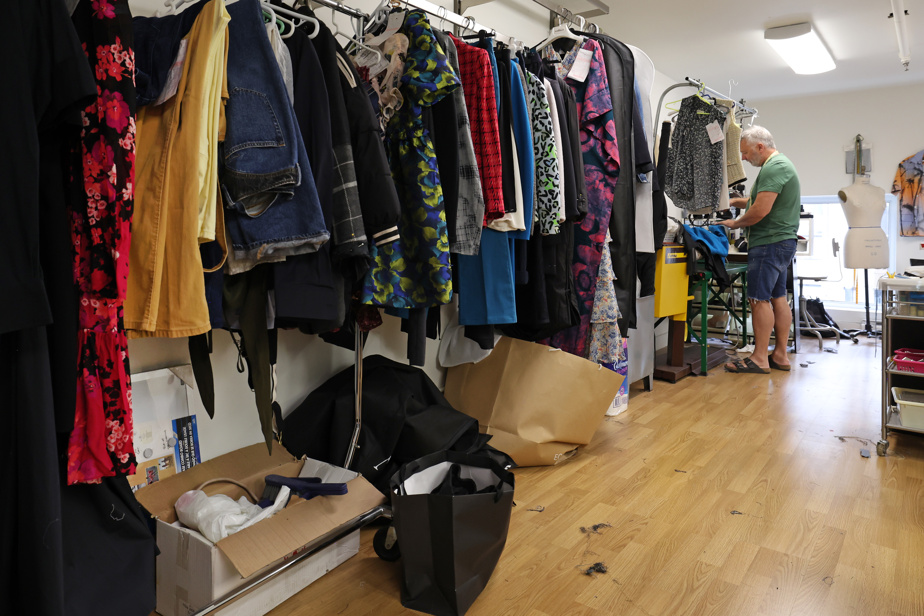No less than 700,000 tonnes of clothing are thrown away each year in France. Hoping to reduce these mountains of waste, the French government is setting a precedent by offering a “bonus” for patching. The measure also extends to old shoes.
The goal is to convince people that it is more beneficial to repair than to throw away.
Concretely, those who have jeans patched or shoes repaired will obtain a reduction in their bill of 6 to 25 euros (from $8.83 to $36.78). Repairing a hole in a sweater, replacing a lining or a zipper: the range of eligible repairs will be wide.
The “reparations fund” released by the State is 3.7 million euros in 2023; it will rise to 11 million in 2024.
In order to manage these bonuses, the French State has entrusted the eco-organization Refashion with the mandate to enlist and “label” sewing and shoemaking workshops. Refashion consultant and spokesperson Charlotte Roussel says workforce recruitment, with webinars and door-to-door canvassing, is underway.
During an exchange with The Press, the expert specified that French customers will first be eligible for five price reductions on the textile side and four on the footwear side. The measure will be in force from next October.
There will certainly be some sort of mapping of places to go for patching. We too have a labor shortage, one of our missions will be to revalorize this know-how.
Charlotte Roussel, consultant and spokesperson for Refashion
Tons and tons of fabrics thrown away
In Quebec, textiles represent nearly 6% of materials thrown away, according to data collected in 2019-2020 by Recyc-Québec. We are talking about 292,000 tonnes during this period. An increase of 3.1% in 10 years.
In government, the Minister of Justice, Simon Jolin-Barrette, has already announced a bill relating to the right to repair of household appliances and electronic devices. At her office, political advisor Justine Gravel indicated to The Press that it is a “priority” to better protect consumers’ rights and their purchasing power, especially in the current context of inflation.
“As part of this bill, we have targeted goods that are the subject of a large number of complaints to the Consumer Protection Office. That said, we are closely following what is being done in Europe and elsewhere in the world, so that Quebec continues to be a leader in consumer protection,” she added.
A craze for patching
At Atelier Couture D, on Saint-Laurent Boulevard in Montreal, there are spools of thread of all colors, up to the ceiling. During the pandemic, balls stopped, as did weddings. A large part of the clientele remained teleworking. The owner, Pierre Dextrase, explains that he was forced to rent part of his workshop. He was surrounded by five seamstresses; he only has one left.
Today, however, the designer notices a craze for patching clothes. More and more customers are coming to have the size of their pants adjusted. For some repairs, there is often a two-week wait.

PHOTO ROBERT SKINNER, THE PRESS
Pierre Dextase, owner of Atelier Couture D. According to him, it is essential to revalorize the profession.
“In Quebec, I believe that the first step consists of revaluing the profession. Sewing is an art. Unfortunately, there is a serious labor shortage. Replacing a coat clasp is a lot of work. You have to start by undoing it, unstitching it, redoing it. It can easily take 45 minutes. We should be recognized in the same way as a mechanic. »
At his place, redoing the edge of a pair of pants costs around $18.
Jonathan Laplante is the manager of the 14 alteration shops. One thing leads to another. He also noticed a craze for sewing. But the fact remains that it often costs less to buy new than to patch things up. And he too has a recruiting challenge.
I manage to recruit from communities with immigrant backgrounds. We have good fashion design programs, but people are not interested in sewing. It’s a shame because the clientele is there.
Jonathan Laplante, director of alteration shops One thing leading to another
The Metropolitan Fashion Cluster is an organization aiming to contribute to the growth of the Quebec fashion industry. Its general director, Mathieu St-Arnaud Lavoie, explains that there is already a movement to recover fur, revalorize leathers, denim, and promote eco-design. According to him, Quebec should take inspiration from France with its patching bonus.
“I believe that there is a collective laziness, there is a lack of understanding of repair. The bonus is a great idea. But anyone will tell you that the first step is retaining design staff. »
Call for textile ideas
The municipalities of Montreal and Gatineau have decided to take a further step in terms of textile waste by launching a call for technological tenders. The objective: to reduce the tonnes of textiles sent to landfill by promoting reuse or recycling. Both cities are asking to submit technologies to sort fabrics by color and composition. For the preparation of textiles (e.g.: depersonalization, cleaning, repair, upcycling) or their recycling (e.g.: removal of hard spots, cutting, shredding, defibration, etc.). And finally, to recycle mechanically or chemically. In the greater Montreal area, 54 organizations and 40 thrift stores (private companies) collect textiles in good condition in order to resell them locally or on the export market.
Source: TechniTextile Quebec
Learn more
-
- 1.2 billion
- Clothing production generates 1.2 billion tonnes of CO annually2more than the combined emissions from the air and shipping industry
- 17 tons
- The production of one ton of textile generates 17 tons of CO2. For comparison, producing a ton of plastic generates 3.5 tons of CO2.
Source: Commission on water, the environment, sustainable development and large parks, as part of the public consultation on the draft 2020-2025 residual materials management master plan for the Montreal agglomeration
